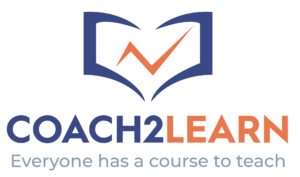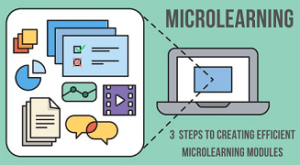Traditionally when we speak of creating a course for corporate employees, the general instructional design approach is to bridge a knowledge gap between the content and the learner’s current knowledge of the subject at hand. Although, when it comes to corporate training, I prefer not to use the term knowledge as it is slightly inaccurate in most cases. The preferred term would be a skill gap.
Think about the last time you learned something as part of your corporate training. Were you able to perfectly understand the material by just reading it? The answer is likely no! Most of the time, we require practice for what we have learned to get better at it or to master it. Anything that involves practice in order to improve is a skill, not just knowledge gain. So when considering that skill is the fundamental learning gap, I believe we design courses without catering to the other learning gaps (motivation, habit, environment or user experience) more often than not. In turn, learning is insufficient, which often leads to failure.
Let us look at different types of learning gaps and some instructional design tips to identify them:
Motivation Gap:
Motivation is the most common learning gap that I have come across in my instructional design experience. Sometimes the learners do not believe in the training or don’t find the training beneficial, so they become easily distracted. What can we do if somebody is not interested in the content? Unfortunately, there isn’t too much we can do to make them believe in the content. However, using instructional design techniques for course presentation and flow can ensure they have a more enjoyable experience therefore, they are more likely to pursue and continue the learning. For example, a neatly and well-written set of instructions is much easier for a learner to perform than an ambiguously written set. In addition, the selection of fonts, images, usability of the activities (user experience), and the trainer’s presentation skills all contribute to increasing a learner’s motivation.
A special kind of demotivation for learners is the need to unlearn. In this situation, over the learner’s life they have taken on old practices, habits, and processes that become hurdles in their path forward. Therefore, identifying and acknowledging such cases is essential before creating a learning plan.
Some of the questions to ask to identify this gap are:
- What is the learner’s attitude toward the change?
- Are they going to be resistant to changing course?
Habit Gap:
A majority of the things we do in our day-to-day life is habit-driven. Your morning routine, your essential coffee, getting the kids ready for school, etc. You perform these much like autopilot mode of a airplane. So sometimes, an existing habit of a learner could be seen as a learning gap. For example, imagine a person who undertakes training about giving performance feedback shortly after being promoted to a managerial position. They might know about the feedback process, but they are so used to being on the receiving side that they might have challenges adapting to the change of giving feedback. This situation is slightly different from unlearning because the learner doesn’t lack the motivation to change. Instead, the old habit is too difficult to overcome. Repetition is the best way to tackle this learning gap. Creating different scenarios and situations for the learner to perform the newly learned skill will better help them overcome the problem.
Some of the questions to ask to identify this gap are:
- Are any of the required behaviours habits?
- Are there existing habits that will need to be unlearned?
Environment or User Experience Gap:
Sometimes learners are motivated and excited to start their new learning process that the learning gaps discussed above aren’t an issue. Still, the environment or user experience presents too many complications for them to start or continue their learning journey. For example, you’ve all likely encountered a situation where you were provided with multiple web links, user ids/two-factor authentication, disparate documents, and prerequisites to complete training. All of these are examples of a bad environment and user experience that individually, let alone altother can discourage motivated learners from pursuing their learning.
Also, many organizations offer rewards and leaderboards as motivation to complete learnings. Suppose those are not updated or taken seriously by the organization. In that case, it cultivates a poor learning culture, which is the exact opposite of what they are supposed to provide. So a lack of a suitable environment sometimes creates a significant learning gap for the learners.
Some of the questions to ask to identify environment or user experience gaps are:
- What in the environment is preventing the learner from being successful?
- What is needed to support them in being successful?
- Apart from these, there is also a communication gap which can be a major but overlooked learning gap.
Understanding the existence of other gaps apart from the skill and knowledge gap could be the first step towards setting the right course foundation. We recommend you identify all these gaps at the beginning of the process before setting the learning objectives, learning technology, and learning method. This preparation work will help you avoid creating a significant learning blunder and save time, energy, money, and your learners will have a nice path to success.




